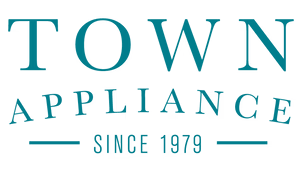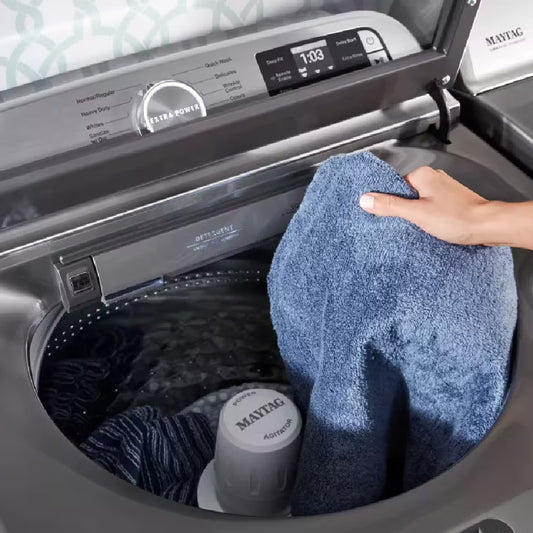Laundry is an inevitable household chore, but its impact on the environment is often underestimated. As individuals increasingly recognize the importance of sustainable living, the concept of "green laundry" has gained traction. Green laundry refers to adopting eco-friendly practices and utilizing products that minimize harm to the environment throughout the laundry process. This article aims to demystify the laundry symbols found on garment care labels, explain their meanings, and shed light on sustainable laundry practices. By understanding these symbols and implementing environmentally conscious habits, we can collectively reduce our carbon footprint and contribute to a greener planet.
Laundry Symbol History
Laundry symbols have become a universal language for garment care, offering guidance on washing, drying, ironing, bleaching, and dry cleaning methods. These symbols were introduced to bridge communication gaps caused by language barriers and varying care instructions. The origin of laundry symbols can be traced back to the 1960s when the International Organization for Standardization (ISO) established standardized laundry care symbols, ensuring clarity and consistency in clothing care instructions across the globe.
Washing Symbols
Washing symbols are an essential part of laundry care labels and provide instructions on how to wash a particular garment. They encompass a variety of elements such as water temperature, washing cycle type, and whether machine wash or hand wash is recommended. Understanding these symbols is crucial for proper care and preservation of clothing, preventing unnecessary wear and tear.
Water Temperature Symbols
Water temperature symbols on laundry care labels help guide you in choosing the appropriate water temperature when washing clothes. Here are the common water temperature symbols you may encounter:
- 30°C or 85°F: This indicates a cold or cool wash. It's best for delicate items and prevents shrinkage or damage from high heat.
- 40°C or 105°F: This symbolizes a warm wash. It's suitable for a variety of fabrics and regular laundry.
- 60°C or 140°F: This represents a hot wash. Use it for heavily soiled items or for items like towels and bedding that require thorough cleaning.
- 95°C or 200°F: This signifies a very hot wash. Use it for items that require deep sanitization, like cloth diapers or heavily soiled linens.
- Hand Wash or Cold Water (Bowl of Water): This symbol suggests hand washing or a cold water wash for delicate or sensitive items that cannot withstand machine washing.
- No Water Symbol: A crossed-out water symbol indicates that the item should not be washed with water. Instead, it may need dry cleaning or other specific care methods.


These symbols are usually found on the care label of your clothing and are essential for maintaining the quality and longevity of your garments. Always follow the instructions provided to ensure your laundry is washed at the appropriate water temperature.
Cycle Type Symbols
Washing machines use various cycle type symbols to indicate the different wash cycles or programs available. These symbols can vary slightly depending on the brand and model of your washer or clothing, but here are some common cycle type symbols you may encounter:
- Normal Wash: This symbol typically looks like a rectangle or square.
- Quick Wash: Often represented by a clock or a similar icon indicating speed, this symbol is for shorter, faster wash cycles.
- Delicate or Gentle Wash: Usually depicted by a flower or a heart, this symbol is for delicate fabrics and gentle washing.
- Heavy Wash: Represented by a pile of clothes or a sturdy-looking icon, this symbol is for heavily soiled or robust fabrics.
- Rinse and Spin: Shown by a bucket of water or waves, this symbol indicates a rinse and spin cycle without washing.
- Spin Only: Depicted by a bucket with a twisted arrow or similar icon, this symbol is for spinning excess water out of the clothes after a wash.
- Pre-Wash: Represented by water in a bucket or a similar icon, this symbol indicates a pre-wash cycle for heavily soiled garments.
- Soak: Often depicted by water in a bucket with wavy lines or a clock, this symbol indicates a soaking cycle before the wash.
- Steam Clean: Represented by wavy lines or a steam icon, this symbol indicates a steam cleaning cycle, useful for deep cleaning and removing wrinkles.
- Sports or Active Wear: Depicted by a running figure or sportswear icon, this symbol is for washing sportswear and active clothing.
- Wool or Hand Wash: Represented by a sweater or hand icon, this symbol is for washing wool or delicate fabrics that require a gentle cycle.

Always refer to your washing machine's user manual to understand the specific cycle type symbols used for your machine, as they can vary based on the brand and model. Understanding these symbols helps in choosing the appropriate wash cycle for your laundry.
Drying Symbols
Drying symbols inform users about the appropriate drying methods for a specific garment. These symbols encompass details regarding tumble drying, natural air drying, and line drying.
Tumble Drying Symbols
Tumble drying symbols on laundry care labels provide instructions on how to use a tumble dryer for drying garments. Here are some common tumble drying symbols you may come across:
- Tumble Dry (Normal): A square with a circle inside indicates that the item can be tumble dried using the normal drying cycle.
- Tumble Dry (Delicate): A square with a circle and a dot inside suggests tumble drying using a delicate or low-heat cycle.
- Do Not Tumble Dry: A crossed-out square with a circle indicates that the item should not be tumble dried and should be air-dried instead.
- Tumble Dry Low Heat: A square with a circle and one dot inside signifies tumble drying on a low-heat setting.
- Tumble Dry Medium Heat: A square with a circle and two dots inside implies tumble drying on a medium-heat setting.
- Tumble Dry High Heat: A square with a circle and three dots inside indicates tumble drying on a high-heat setting.
- Tumble Dry No Heat/Air Dry: A square with a circle and a horizontal line in the middle suggests tumble drying with no heat or using an air-dry setting.

Always refer to the care labels on your clothing to understand the specific tumble dry symbol used for each garment.
Natural Drying Symbols
Line Dry: Indicates that the garment should be hung on a clothesline or similar for natural air drying.
Drip Dry: Instructs to lay the garment flat to dry.
Ironing Symbols
Ironing symbols provide guidance on ironing temperatures and other essential ironing details.
Iron Temperature Symbols
-
Cool Iron: This iron symbol recommends ironing at a low temperature.
-
Warm Iron: Suggests ironing at a medium temperature.
-
Hot Iron: Advises ironing at a high temperature.
-
Bleaching Symbol
-
Bleaching symbol offer instructions regarding whether bleaching is permissible and what type of bleach can be used.

Bleaching Symbols
- Bleach Allowed: Indicates that bleach can be used.
- Non-Chlorine Bleach Only: Specifies the use of non-chlorine bleach only.
- Do Not Bleach: Advises against using any type of bleach.
- Dry Cleaning Symbols
- Dry cleaning symbols inform consumers whether the garment is suitable for dry cleaning and which type of solvent to use.
Dry Cleaning Symbols
- Dry Clean Only: This dry clean symbol indicates that the garment should only be dry cleaned.
- Dry Clean in Any Solvent: Implies the garment can be dry cleaned using any solvent.
- Petroleum Solvent Only: Recommends using petroleum-based solvent for dry cleaning.
- Perchloroethylene (PCE) Only: Specifies the use of perchloroethylene solvent for dry cleaning.
Understanding these laundry symbols is crucial for extending the life of garments and optimizing laundry practices. Following these symbols can help users reduce unnecessary wear and tear, resulting in less frequent replacement and, consequently, less waste.
The Importance of Green Laundry Practices
Green laundry practices are vital for both environmental sustainability and personal well-being. By adopting eco-friendly habits in laundry routines, individuals can significantly minimize the negative impact of laundry on the planet.
Environmental Impact
- Water Conservation: Implementing practices such as shorter wash cycles, full loads, and proper load sizing helps reduce water consumption during laundry.
- Energy Efficiency: Using cold water for washing, line-drying, and air-drying are energy-saving practices that contribute to a lower carbon footprint.
- Reduced Pollution: Choosing phosphate-free and eco-friendly types of laundry detergents prevents harmful chemicals from entering waterways, reducing pollution.
- Waste Reduction: Proper garment care prolongs clothing lifespan, reducing textile waste that ends up in landfills.
- Allergen Reduction: Using natural or hypoallergenic detergents can alleviate skin sensitivities and allergies caused by harsh chemicals.
- Improved Air Quality: Avoiding dryer sheets and fabric softener with harmful chemicals enhances indoor air quality, benefiting respiratory health.
- Savings: Adopting eco-friendly laundry practices, such as air-drying, leads to cost savings on energy bills.
Tips for an Eco-Friendly Laundry Routine
- Use Cold Water: Washing clothes with cold water can save a significant amount of energy, as heating water accounts for a considerable portion of a washing machine's energy use.
- Air-Dry Clothes: Whenever possible, air-dry clothes instead of using a dryer. It saves energy and prolongs the life of your garments.
- Choose Efficient Machines: Opt for energy-efficient washing machines and dryers with high ratings, as they consume less water and energy.
- Opt for Eco-Friendly Detergents: Use biodegradable, phosphate-free, and plant-based detergents that are less harmful to the environment.
- Avoid Overuse of Detergent: Follow recommended detergent dosages to prevent excess chemicals from entering the water supply.

Product Recommendations
- Eco-Friendly Detergents: Brands like Seventh Generation, Ecover, and Biokleen offer eco-friendly laundry detergents.
- Wool Dryer Balls: Replace dryer sheets with reusable wool dryer balls to reduce drying time and static cling.
- Clotheslines and Drying Racks: Invest in quality clotheslines or drying racks for efficient air-drying.
Green laundry practices, as informed by laundry symbols, empower individuals to reduce their environmental impact while enhancing personal well-being. Understanding and heeding laundry symbols is an essential step toward sustainable laundering. Incorporating eco-friendly habits and utilizing appropriate products can collectively contribute to a more sustainable and ecologically responsible future. For a wide range of eco-friendly laundry appliances and products, including energy-efficient washing machine for sale and electric dryer, visit us at Town Appliance. Join us in making a difference with every load of laundry, contributing to a greener and healthier planet.







